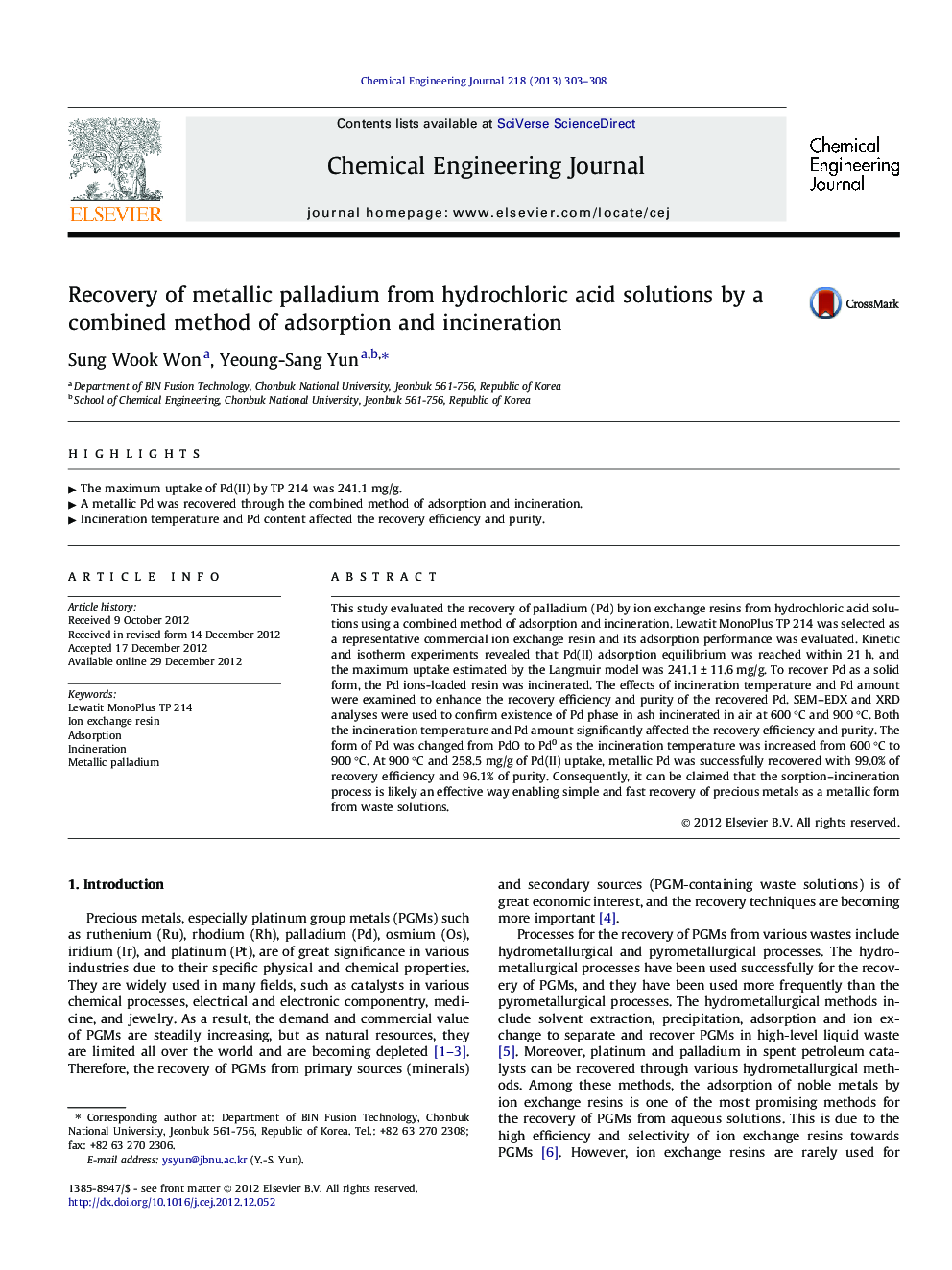| Article ID | Journal | Published Year | Pages | File Type |
|---|---|---|---|---|
| 148783 | Chemical Engineering Journal | 2013 | 6 Pages |
This study evaluated the recovery of palladium (Pd) by ion exchange resins from hydrochloric acid solutions using a combined method of adsorption and incineration. Lewatit MonoPlus TP 214 was selected as a representative commercial ion exchange resin and its adsorption performance was evaluated. Kinetic and isotherm experiments revealed that Pd(II) adsorption equilibrium was reached within 21 h, and the maximum uptake estimated by the Langmuir model was 241.1 ± 11.6 mg/g. To recover Pd as a solid form, the Pd ions-loaded resin was incinerated. The effects of incineration temperature and Pd amount were examined to enhance the recovery efficiency and purity of the recovered Pd. SEM–EDX and XRD analyses were used to confirm existence of Pd phase in ash incinerated in air at 600 °C and 900 °C. Both the incineration temperature and Pd amount significantly affected the recovery efficiency and purity. The form of Pd was changed from PdO to Pd0 as the incineration temperature was increased from 600 °C to 900 °C. At 900 °C and 258.5 mg/g of Pd(II) uptake, metallic Pd was successfully recovered with 99.0% of recovery efficiency and 96.1% of purity. Consequently, it can be claimed that the sorption–incineration process is likely an effective way enabling simple and fast recovery of precious metals as a metallic form from waste solutions.
• The maximum uptake of Pd(II) by TP 214 was 241.1 mg/g. • A metallic Pd was recovered through the combined method of adsorption and incineration. • Incineration temperature and Pd content affected the recovery efficiency and purity.
